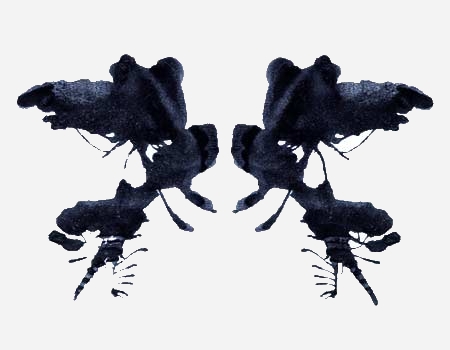Pattern Recognition and Cognitive Categories:
It is on the basis of pattern recognition that we form
cognitive categories (in linguistics, these are generally what
we call "nouns," which are persons, places or things).
Categories are essential for understanding and navigating in the
world.
Stereotype: A stereotype is something used to
characterize, or describe a category. Sometimes it is seen
as a template, like a prototype, or archetype. They can be
either positive, or negative, or somewhere in between.
Labeling: This involves describing someone
or something in a word or short phrase. All nouns are
labels of a sort, a name that is given to a person, place, or
thing. Labeling is an outgrowth of this sort of pattern
recognition. An example is "dog" for the upper left image
above. Another could be describing someone who
has broken a law as a "criminal." Another would be calling
someone who has some sort of physical incapacity a "cripple."
The problem that can arise involves the fact that, in addition
to denotations, such labels can have connotations, which can be
either positive, or negative, or in some cases some of both.
Using labels (and stereotypes) can help simplify the patterns
folks recognize. Neither are automatically detrimental.
The problem arises when it results in over-simplification (i.e.,
reification) of things that are more complex and/or nuanced.
Unfortunately, there are those who rely on stereotyping and
labeling as a way to avoid complexity and/or avoid recognizing
their inability to deal with complexity.
Prejudice: The thing about a prejudice is that it
involves evaluation (judging something) in advance. It can
and often is based on a stereotype, or label (often contained in
the connotation). It can be either positive, or negative,
and in some cases a little of both.
Preference: When looking at bias, it is important to
factor in the evaluative portion. Thus, when looking at a
pattern being recognizes, is there a positive, or negative value
attached (like a connation attached to the definition of a
word).

When it comes to the flavor or ice cream, some
prefer vanilla, while some prefer chocolate. This can be
viewed as a bias in favor of one versus the other.
Similarly, people may prefer not to see certain things, or
engage in certain activities.
Cognitive categories Positive, or Negative?
These cognitive categories (e.g., stereotypes and prejudices)
are not inherently positive, or negative. There can be
positive ones and negative ones (e.g., "war veterans" can be seen positively, while
"welfare recipient" can often be seen negatively).
Biases and
Pattern Recognition: From this perspective, a bias is simply
a pattern (either spatial, or temporal) that we use at times
when they (one, or the other, or both) aren't applicable.
They are erroneous patterns that we see that prevent use from
actually perceiving reality.
As with
cognitive categories discussed above, they can be either
positive, or negative, but what is most important about them is
their potential to obscure our perceptions of reality.
This can be especially prevalent in the case of a bias based on
a negative stereotype.
So, for
example, a person who tends to have a spatial bias for the
perception of dirt might see the picture of the dog at the top
of this page as actually just a bunch of dirt blotches.
Biases and prejudices can prevent us from seeing reality and they
can lead us into a variety of logical fallacies.
Inkblot Test: By the
way, it is this ability to recognize patterns, even when the
visual material is quite vague, that form the basis of the
inkblot test. So, what do you see? The "biases"
revealed when people state what they see in the inkblot gives
some information that can be used to assess personality.
Biases Positive, or
Negative? As with cognitive categories discussed
above, they can be either positive, or negative, but what is
most important about them is their potential to obscure our
perceptions of reality. This can be especially prevalent
in the case of a bias based on a negative stereotype.

To
go to the brief introduction to biases
 To
go to our Logical
Fallacies Page
To
go to our Logical
Fallacies Page
 To
go to Science Page
To
go to Science Page
 To
go to the Articles Page
To
go to the Articles Page